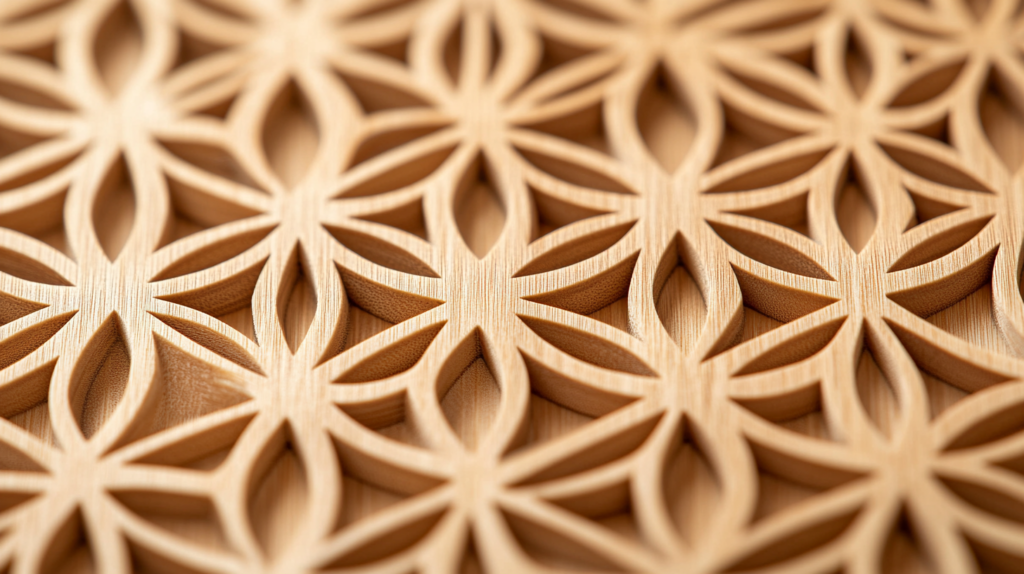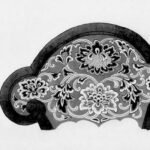If you’ve ever admired the intricate latticework of a traditional Japanese screen or marveled at the precise geometry found in historical temples, there’s a good chance you’ve encountered Kumiko patterns (組子文様). With origins dating back more than a millennium, these meticulously crafted wooden motifs embody Japan’s remarkable fusion of artistry and spirituality. As I delved deeper into Japanese architecture, I became increasingly drawn to the symbolic richness behind each design—so much so that I felt compelled to share their significance with designers outside of Japan. After all, the timeless elegance and cultural depth of Kumiko patterns transcend borders, offering fresh inspiration to anyone seeking to fuse tradition with contemporary style.
What Are Kumiko Patterns?
Kumiko refers to a specialized woodworking technique where thin, precisely cut pieces of wood are fitted together without nails to form stunning geometric motifs—known collectively as Kumiko patterns (組子文様). This craft began to develop around 1,400 years ago, influenced by the influx of Buddhist artisans and architectural expertise from the Asian continent. Over generations, master carpenters honed Kumiko into the refined art form we know today, passing along meticulous skills that rely on patience, precision, and a deep respect for wood’s natural qualities.
- Precision and Skill: Each wooden piece is carefully measured, cut, and beveled to fit seamlessly, resulting in a near-flawless geometric design.
- Cultural Legacy: The craft itself is a living testament to Japan’s devotion to quality and harmony with nature—values embedded in everything from architecture to fine art.
Why These Patterns Matter for Modern Design
Kumiko patterns enrich spaces by adding both visual flair and symbolic meaning. Whether you’re a foreign designer searching for fresh cultural elements or a homeowner looking to incorporate timeless aesthetics, Kumiko offers:
- Elegance: The intricate geometry strikes a balance between minimalism and complexity—ideal for designs that blend heritage with modern trends.
- Symbolism: Many Kumiko motifs reflect age-old beliefs tied to protection, prosperity, or spiritual growth. Incorporating them can imbue a space or product with layers of meaning.
- Versatility: From architectural partitions to decorative panels, these patterns adapt seamlessly across both traditional and contemporary contexts.
Celebrated Kumiko Patterns and Their Meanings
The Asanoha Series (麻の葉)

- Asanoha: Inspired by the shape of the hemp leaf, this iconic pattern symbolizes swift, robust growth. Historically, families in Japan dressed children in clothing featuring Asanoha, believing it would ensure strong, healthy development. Its triangular lines are also viewed as a protective charm against misfortune.

- Tsu no Asanoha: A delightful variation with a look reminiscent of snowflakes. Softer and more whimsical than the classic Asanoha, it retains the same underlying symbolic focus on growth and protection.

- Shippō Asanoha: A unique blend of Asanoha’s angular geometry and shippō (“seven treasures” in Buddhist texts). Its interconnected circles and lines represent boundless harmony, forging a sense of eternal expansion and unity.

- Double Asanoha: Layering the Asanoha pattern amplifies its connotations of vitality, spiritual shielding, and success—perfect for designs where you want a bold statement of positive energy.

- Kikyō Asanoha: This graceful pairing of the bellflower (kikyō) with Asanoha emphasizes eternal love, protection for children, and a sense of enduring devotion.
The Hishi Series (菱)

- Hishi: While it appears purely geometric, the root of this motif is the water plant hishi, known for its vigorous growth. As a result, Hishi patterns are linked with prosperity, good health, and a strong family lineage.

- Double Hishi: Stacking two rhombus forms symbolizes added layers of good luck, reinforcing themes of fertility, resilience, and well-being.

- Triple Hishi: Layering three rhombuses amplifies the connection to fertility and longevity. Its playful geometry also pairs surprisingly well with modern or Western interior elements.

- Idutsu-Bishi: Modeled after the square frame once used to protect wellheads, this pattern suggests safeguarding vital resources—like water—and often symbolizes abundance and financial success.

- Komochi-Bishi: Known as the “parent-child” design, it combines a thicker central “parent” element with thinner “child” lines. This interplay reflects familial closeness and the aspiration for healthy descendants.
Embracing Kumiko Patterns Across Cultures
Although deeply rooted in Japanese history, Kumiko patterns have a universal appeal. Designers in various fields—from interior architecture to branding—are increasingly drawn to:
- Storytelling: Each motif has a story, offering clients and end users a piece of cultural heritage within contemporary spaces.
- Adaptability: Their geometric precision suits an array of materials, including wood, glass, and metal, allowing for endless creative possibilities.
- Timelessness: Woven into modern furnishings or sleek partitions, Kumiko patterns bridge eras, making them highly relevant in forward-thinking design.
Further Exploration and Resources
If you find yourself enchanted by Kumiko patterns (組子文様), consider exploring specialized e-books or online marketplaces offering vector files. These resources typically cover dozens of unique motifs, complete with cultural background and style recommendations. Collectors and gift-givers might also search for actual Kumiko art pieces, which make memorable presents for events like restaurant openings, weddings, or personal milestones.
The following articles provide more details about Kumiko patterns and their meanings.
Kumiko patterns are more than aesthetic flourishes; they embody centuries of Japanese cultural wisdom, meticulous craftsmanship, and spiritual reverence. By integrating these motifs into your projects, you do more than add beauty—you forge a bridge between tradition and innovation, echoing the values of growth, unity, and protection that have captivated Japanese artisans for generations. For any designer eager to merge meaning with style, Kumiko patterns (組子文様) offer a wellspring of inspiration—one that honors the past while invigorating the future.


